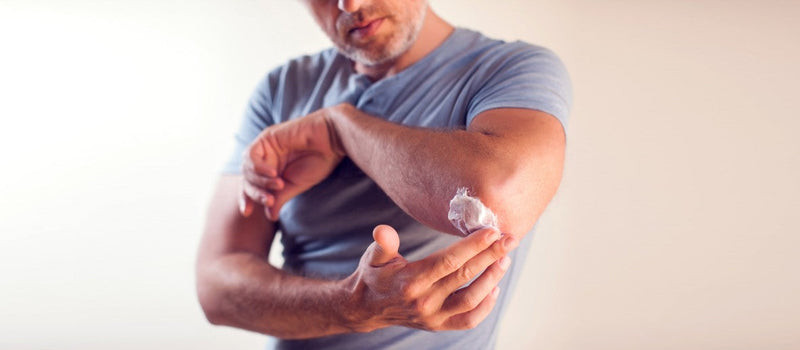

Globally, diabetes and diabetic foot disease (DFD) is a major health problem and is increasing as people live longer. DFD is generally associated with ulceration and infection. Although rarer, Charcot foot disease, which causes foot damage and deformity, can occur. The two underlying causes of DFD are neuropathy, which is nerve damage and ischaemia, a condition where tissue, muscle or an organ does not get enough blood or oxygen. Both conditions are caused by high blood sugar levels. Patients with long-standing and inadequately controlled diabetes are the most likely to develop diabetic foot problems.
Diabetic foot ulcer patients have a greater than twofold increase in mortality compared with nonulcerated diabetic patients. Diabetic patients with leg and foot ulcers have a lower 5-year survival (43 percent) than nondiabetic ulcerated subjects (56 percent) and general population controls (68 percent). Reported mortality rates for diabetic foot ulcer patients range from approximately 10 percent on a median follow-up of 16 months to 24 percent after 5 years.[1]
Undetected problem
Since peripheral neuropathy can cause numbness, someone with diabetes might not feel a foot injury, cut or even a blister, which can turn into an open wound or ulcer. Diabetic foot ulceration is full-thickness penetration of the dermis (middle layer of skin) of the foot in a person. Once peripheral neuropathy develops, the annual incidence of ulcer formation increases from less than one percent to greater than 7 percent.[2]
Left untreated due to diminished sensation, a diabetic foot ulcer can get worse over weeks or months without someone knowing because they do not feel the pain. In the initial stages, a diabetic foot ulcer can be treated successfully, increasing the chance of a full recovery.
However, in advanced stages, the risk of complications increases. Diabetic foot ulcers account for more [hospital} admissions than any other complication of diabetes. [3]
The earliest signs of a diabetic foot ulcer include:[4]
· Swelling
· Warmth or redness of the foot
· Skin discoloration
· Drainable or blood on your socks or in your shoes
· Foul-smelling odor coming from the foot
· A tender spot on your foot
Diabetic foot ulcer stages
Doctors use classification and scoring systems to determine the severity of a diabetic foot ulcer and determine proper diabetic foot ulcer treatment. There are several classification systems, but the Wagner Ulcer Classification System is used most often. It uses six grades (0 to 5) that focus on the depth of the ulcer penetration, the extent of the tissue necrosis, and the presence of infection and inflammation of the bone or osteomyelitis (OM).
The Wagner Scale
- Wagner Grade 0: Although there is no open wound, there may be potential risk factors, such as calluses, redness or swelling, often accompanied by neuropathy.
- Wagner Grade 1: A superficial ulcer that has not moved beyond the surface layers of the skin.
- Wagner Grade 2: Ulcer extended to ligament, tendon, or joint capsules.
- Wagner Grade 3: The ulcer penetrates the bone and can be accompanied by infection or abscess.
- Wagner Grade 4: There is gangrene or tissue death in a specific area of the foot.
- Wagner Grade 5: Damage from infection is severe throughout the foot. requiring amputation.
Other diabetic foot ulcer contributing factors
While having diabetes increases your chance of getting a diabetic foot ulcer, other factors that can increase the risk include:
· Poorly fitted or poor-quality shoes
· Poor hygiene (not washing regularly or thoroughly or not drying feet well)
· Improper toenail trimming
· Alcohol consumption
· Eye disease caused by diabetes
· Heart and kidney disease
· Obesity
· Tobacco use (inhibits blood circulation)
Diabetic foot problem prevention
Considering the high risk of getting a diabetic foot ulcer if you have diabetes, prevention is crucial. Proper foot care includes:
· Check your feet daily.
· Put feet up when sitting.
· Trim nails carefully and treat corns and bunions with special care.
· Avoid extreme hot and cold on your feet.
· Take short lukewarm baths or showers and try not to scrub too hard when bathing or showering. Use a gentle cleanser.
· Use mild fragrance-free soaps to avoid irritations.
· Dry skin everywhere after washing, patting gently.
· Use a humidifier during winter to add moisture back into the air.
· Moisturize skin. Best to moisturize right after shower or bath to lock water into skin.
To keep feet from getting dry and cracked, which can lead to infections, consider products such as EASE-Z Diabetics’ Dry Skin Therapy Foot Cream. It is an over the counter (OTC) offering that uniquely features active Zinc Acetate to relieve and protect dry, cracked skin associated with diabetes. EASE-Z Diabetics’ Dry Skin Therapy Foot Cream covers feet with a thick protective layer that penetrates to provide real, long lasting-relief. It is unscented and non-greasy for added comfort. Daily use gives superior recovery and continuous relief, assuring long-lasting comfort.
[1] Chammas NK, Hill RL, Edmonds ME. Increased Mortality in Diabetic Foot Ulcer Patients: The Significance of Ulcer Type. J Diabetes Res. 2016;2016:2879809. doi: 10.1155/2016/2879809. Epub 2016 Apr 24. PMID: 27213157; PMCID: PMC4860228. https://pmc.ncbi.nlm.nih.gov/articles/PMC4860228/
[2] “Diabetic Food Infections,” STATPearls, Accessed January 17, 2025. https://www.statpearls.com/articlelibrary/viewarticle/20441/
[3] Oliver TI, Mutluoglu M. Diabetic Foot Ulcer (archived) [Updated 2023 Aug 8]. In: StatPearls [Internet]. Treasure Island (FL): StatPearls Publishing; 2024 Jan-. Available from: https://www.ncbi.nlm.nih.gov/books/NBK537328/
[4] Anderson, Bernadette, MD, MPH, The Stages of a Diabetes Foot Ulcer: Why You Shouldn’t Wait to Seek Treatment,” GoodRX Health, April 21, 2023. https://www.goodrx.com/conditions/diabetes/diabetes-foot-ulcer-stages








